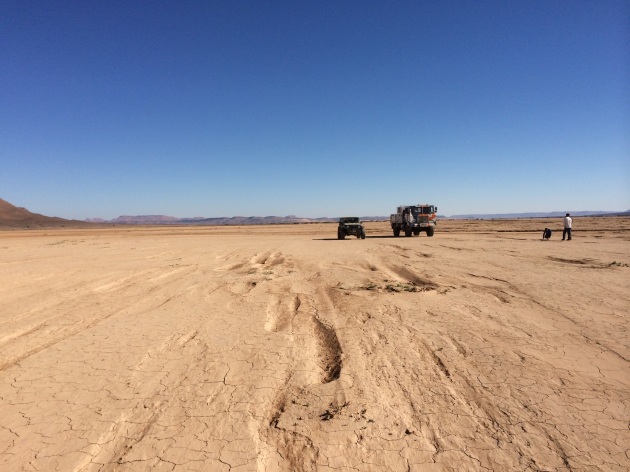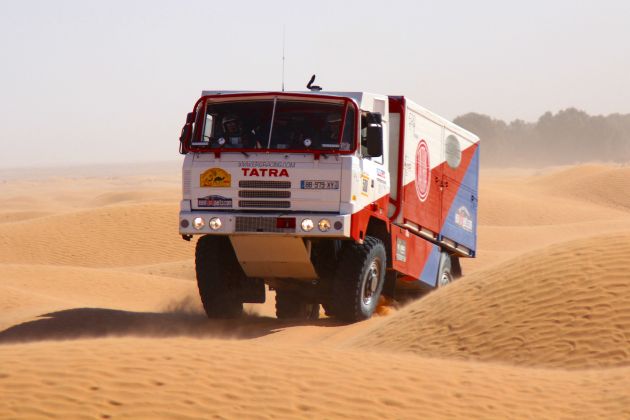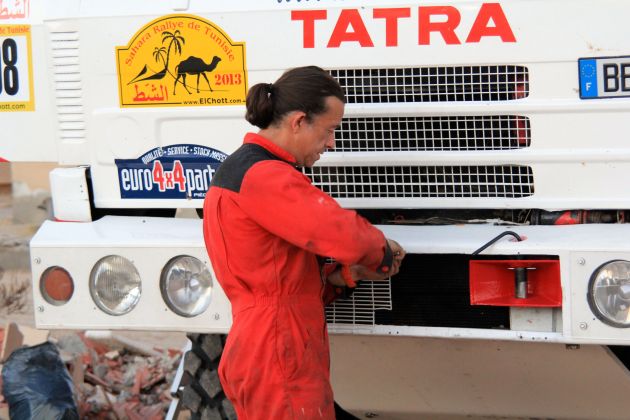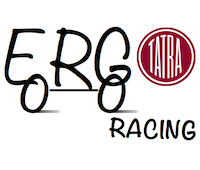Oued Rheris To Zagora
January 5, 2015 Leave a comment
The most difficult part of the trip is always the drive back. The hours crawl by on the way to catch the ferry when you leave home at the start. Cruising along at the speed limit for trucks is an exercise in patience when spirits are high in anticipation of the coming adventure. In the opposite direction, when the daily routine awaits, the road requires even more discipline. The solitude of the highway in the wee hours is quickly dispelled in the dusky orange and turquoise hues of morning twilight. It almost doesn’t seem possible that the same sun also rises over the silent, empty sea of dunes that stretches from horizon to horizon. The news on the radio brings you sharply back into the world that is yours but which you only temporarily left behind.
A week ago when we stopped at dark to make camp in the Oued Rheris, we were in a different world. The labyrinth of scrub trees that effectively stymied us after nightfall proved much less difficult with a visual point of reference that came with the golden light of morning.
A short walk was all it took to find fresh tracks leading through and out of the dense shrubs. It almost didn’t seem possible that we had missed them in the dark. On further inspection, we realized that we had been only 20m away when we had turned around thinking we had reached a dead end. In any case, the tracks that were obvious by day may have been difficult to make out by night while navigating primarily by instrument and with little input concerning the actual state of the surrounding terrain. That method only works well when you don’t have any obstacles like trees, rocks or holes.
We used the handheld GPS again to save time finding our way out of the trees. When we were back on our way, it didn’t take long to reach Foum Mharech, where we stopped for tea on the terrace of the Riad Nomad with its elegant hedge of Oleander overlooking the immense valley below.
Continuing our way to Zagora, we stopped in the plain to take a photo. Our hope was to get the same shot as in 2012, but we decided to avoid the middle part of the passage, which seemed to be soft from the recent rains. Getting stuck in the mud wasn’t in our plans for the day.
Two years before, the Foum had been a dry, barren plain where the track had been fast as long as you kept a lookout out for the larger bumps and ruts. This year, we had to make our way more carefully. We were amazed to see a few worked patches of soil that soon gave way to field after field, freshly tilled and ready for sowing wheat. The dry barren plain had been transformed by the rain into fertile farmland! We drove west toward Zagora, continuing on the narrow piste that at times closely hugged the base of the mountains to avoid ravaging the carefully prepared fields.
At Tafraoute du Sud, some locals came over to meet us. The crossing was not practicable they said, offering to lead us across over a “sure way.” A tractor about 50 meters away was heading over, we replied that if he could cross, we were sure we could too. Turning into the soft sand, we were hindered by all the children running beside and zig-zagging in front of us as we picked our way across. Some of them were very small and hard to see from inside the truck. We were afraid they might get hurt.
Once we were safely on the other side, we decided to stop for lunch at the auberge. Under a clear blue sky we shared the most delicious omelette Berbère in a setting as stunning as a tropical paradise in any tourist brochure. We talked a little with some locals and gave a man a lift to a nearby village in exchange for guiding us through the passable section of a muddy riverbed farther west. Several other tourists in 4×4’s took advantage of the opportunity to follow us through. The rest of the afternoon was uneventful.
We arrived in Zagora by the wide well-leveled piste through the Tizi-n-Tafilalet. At the entrance to town, we checked into the Hotel Sirocco where we spent the night before heading over to Ali Racing the next morning for a check-over. We hadn’t had any mechanical problems, but we thought it was worth a look after three hard days off-road.






































